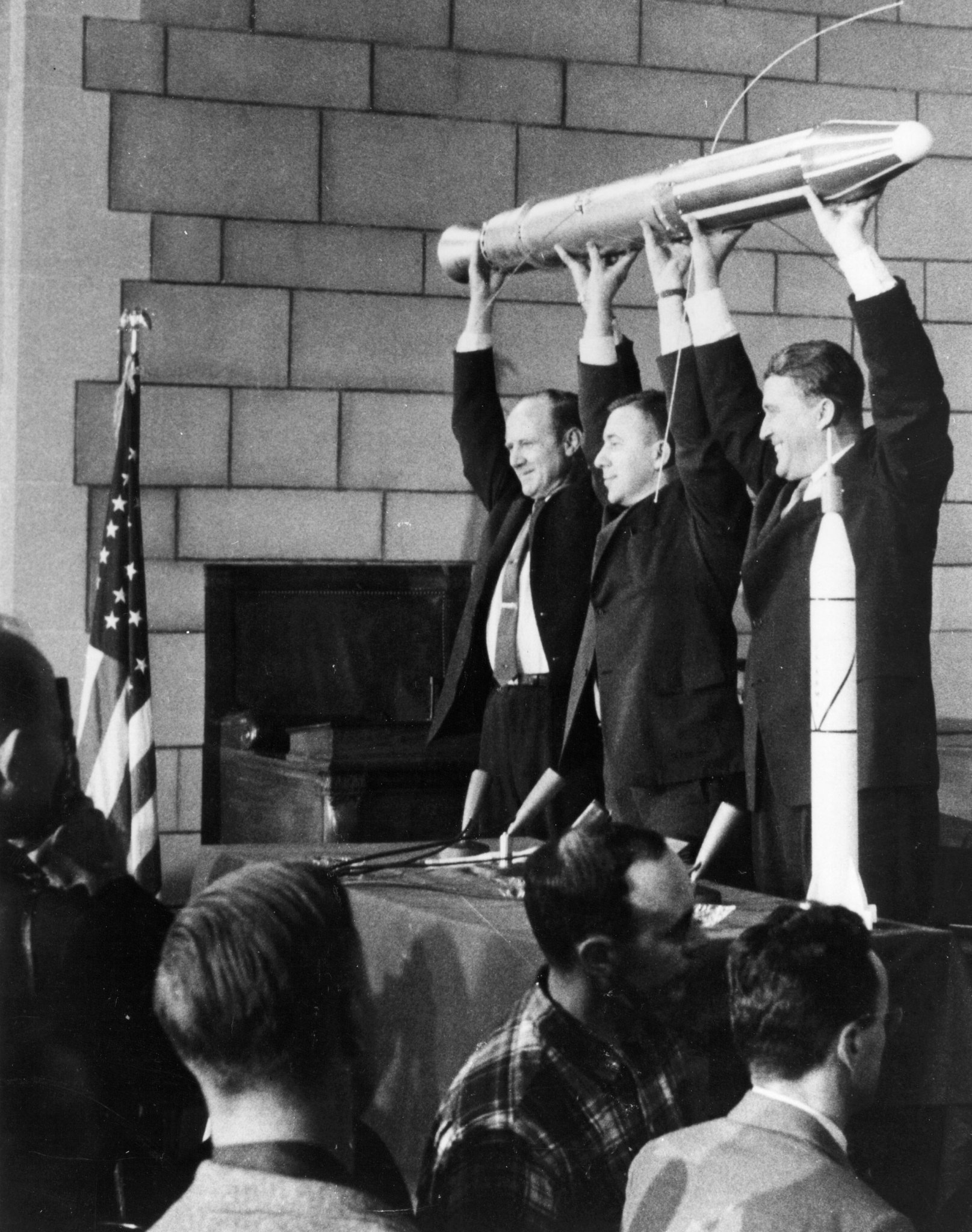
Prior to 1958 scientists were aware that ions and electrons could be trapped by the Earth’s magnetic field, but not that such trapped particles actually existed. At most it was proposed that during magnetic storms a temporary trapped population might create a ring current around Earth, which decayed again as the storm ebbed.
Space scientist James Van Allen and his team at the University of Iowa were the first to discover the radiation belts, now also referred to as “The Van Allen Belts.” For some, this scientific discovery was almost a postscript to a crucial space age first – the experiment that discovered the belts flew aboard the very first American satellite, Explorer 1. Explorer 1 launched into Earth’s orbit on a Jupiter C missile from Cape Canaveral, Florida, on January 31, 1958 and it carried a micrometeorite detector and a cosmic ray experiment – a Geiger counter attached to a miniature tape recorder — designed by Dr. Van Allen and his graduate students.
Data from Explorer 1 and Explorer 3 (launched March 26, 1958) were used by the Iowa group to detect the existence of charged particle radiation trapped by Earth’s magnetic field — the inner radiation belt. Pioneer 3 (launched 6 December 1958) and Explorer IV (launched July 26, 1958) also carried instruments designed and built by Dr. Van Allen. These spacecraft provided Van Allen additional data that led to the discovery of a second, outer radiation belt encircling the inner belt.



























